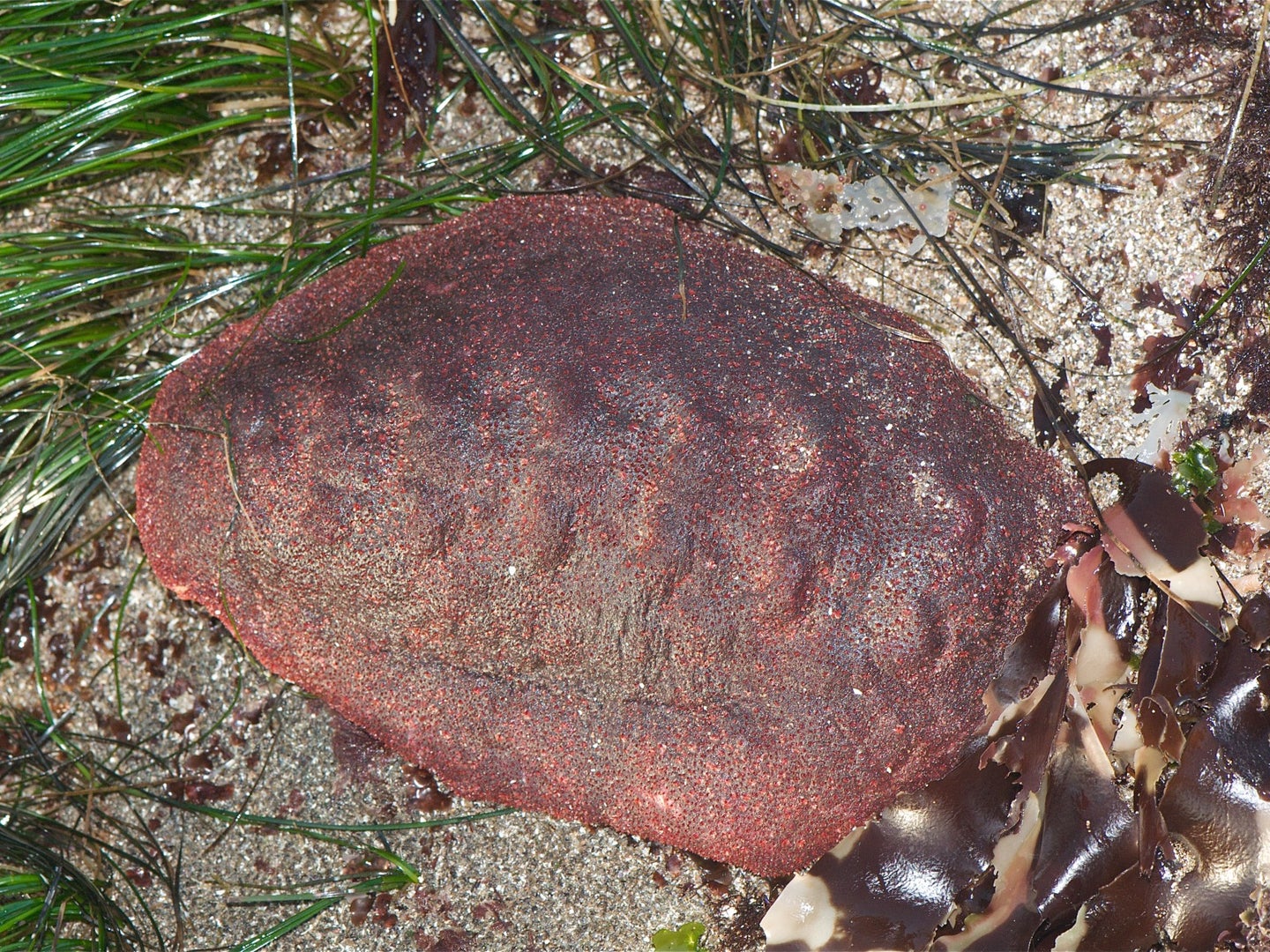This ‘wandering meatloaf’ has teeth made from rare minerals
These mollusks could help scientists advance 3-D printing.

If you search around the shorelines of the North Pacific, you might get lucky and spot a “wandering meatloaf,” a round reddish-brown mollusk also known as the gumboot chiton or, more scientifically, as Cryptochiton stelleri. It trudges along coasts and scrapes algae off rocks with its small but incredibly gritty teeth.
In analyzing this bizarre animal’s hardy chompers, scientists found that its stylus (the long, hollow structure that connects the teeth to the soft membrane below) actually contains tiny particles of santabarbaraite, a rare iron-based mineral that until now had only been found in actual rocks. Santabarbaraite is what gives these mollusks their bite—it makes the root of their teeth light but remarkably strong, and among the hardest materials ever found in nature. Studying how santabarbaraite integrates into chiton teeth not only helps scientists understand how they feed, but the discovery could help advance 3-D printing technology. The findings were published in Proceedings of the National Academy of Sciences.
When analyzing the animal’s teeth the researchers used a variety of advanced imaging techniques, such as microscopy and spectroscopy. While they knew these mollusks’ have exceptionally strong teeth, finding the santabarbaraite inside the stylus was quite unexpected. “[This mineral] has never before been seen in a biological context,” Derk Joester, a material scientist at Northwestern University and the senior author of the paper, said in a statement. “It has high water content, which makes it strong with low density. We think this might toughen the teeth without adding a lot of weight.”
The team also observed that the mineral’s distribution within the tissues that make up the stylus affected the stiffness of the different parts of the hollow structure. They then wondered whether they could use this same principle to make more robust ink for 3-D printing. The researchers produced a synthetic santabarbaraite alternative using a compound similar to chitin, as well as iron and phosphate.
[Read more: New Guinea has ‘chocolate’ frogs, but they’re not for eating]
The ink worked well when printed immediately after mixing, and hardened as it dried. Depending on how much iron and phosphate was added to the mix, the printed material could be soft and rubbery or tough and rigid.
“It should be possible to mix the ink at a ratio that you can change immediately prior to printing,” Joester told The New York Times. “And that would allow you to change the composition, the amount of nanoparticles, and therefore the strength of the material on the fly. Meaning that you can print materials where the strength changes very dramatically over relatively short distances.”
The natural world is a great place for scientists to look for inspiration on how to solve problems of engineering and design. Having ultrahard materials connected to soft underlying structures like in chiton teeth is an interesting mechanical feat, said Joester in a statement—“This remains a significant challenge in modern manufacturing, so we look to organisms like the chiton to understand how this is done in nature, which has had a couple hundred million years of lead time to develop.”
